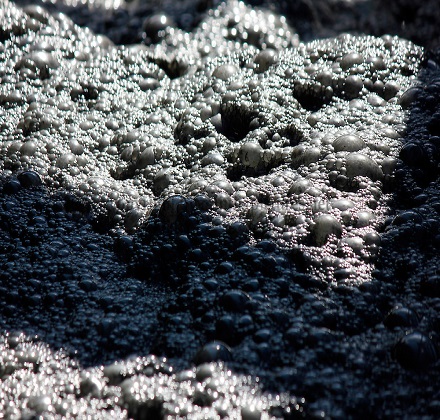Anionic polyacrylamide applications involve mining, beneficiation and metallurgy. Using polyacrylamide can accelerate the settling of effective solids the concentration of small objects, and improve the solid-liquid separation effect, reduce tailings loss and environmental pollution, and also reduce production costs. Under normal circumstances, the process of mineral processing requires high molecular weight products to ensure rapid settling, good centrifugal processes, and easy access to good economic effects. Anionic polyacrylamide is the ideal chemical reagent for the mining and metallurgical industries.
In the coal industry, the ore is classified according to different grain sizes after being mined. Because coal particles and impurities have different proportions in the water, separation of coal is usually taken in the water, coal floats on the surface while the impurities sink to the bottom. After classifing of the treated coal. we can get the product. During above process, powdered clean coal was produced, which requires further processing and recycling by flotation. Adding flocculant and coagulant to improve the separation efficiency of coal and impurities, the clean coal float and tail coal settle. As we can see, usually we use anionic polyacrylamide as a flocculant to promote the solid-liquid separatio in the process of the floated clean coal settling, filtration and recycling. Then in the thickener, the coal is filtered and centrifuged, we use the anionic polyacrylamide as flocculant again.
In the gold and silver mining industry, minerals after crushing and screening of ore are further ground with water and lime in the grinder and are settling in the next thickener. An anionic polyacrylamide is used at this stage to promote the rapid settling of solids and filtration. In this step, the anionic polyacrylamide flocculant is added to the thickener before filtration.
In the aluminum ore industry, the minerals are first crushed, then add concentrated sodium hydroxide in high temperature and high pressure condition. Aluminum dissolves in highly corrosive liquids, and all other impurities except soluble crucibles are not dissolved. After the above process, the gravel is removed together with the pulp that has been subjected to the primary concentrated precipitation. The anionic polyacrylamide flocculant was added to the primary concentration tank, which is a very important process to get a clear overflow. The underflow of the concentrated tank, ie the red mud, will be treated by a reverse flow sedimentation process. In this process, the aluminum in the liquid is recovered through a series of wash sedimentation tanks. In the meantime the anionic polyacrylamide flocculant was reused to promote rapid settling and to obtain a satisfactory clarified overflow. The aluminum-rich primary concentrate overflows through the filtering and, after cooling, is filled with aluminum hydrate to promote aluminum trihydrate precipitation. After filtering and washing, aluminum can be obtained by calcineg .
When anionic polyacrylamide use in copper ores, the slurry or tailings coming out of the flotation cell will enter the thickener for further settlement, and here a flocculant was added to promote rapid settling and a clear overflow. Clarified overflow will be used as recycling water, and the remaining concentrated tailings will be centrifuged into a centrifuge where the anionic polyacrylamide flocculant will once again be added as a centrifugal additive.
